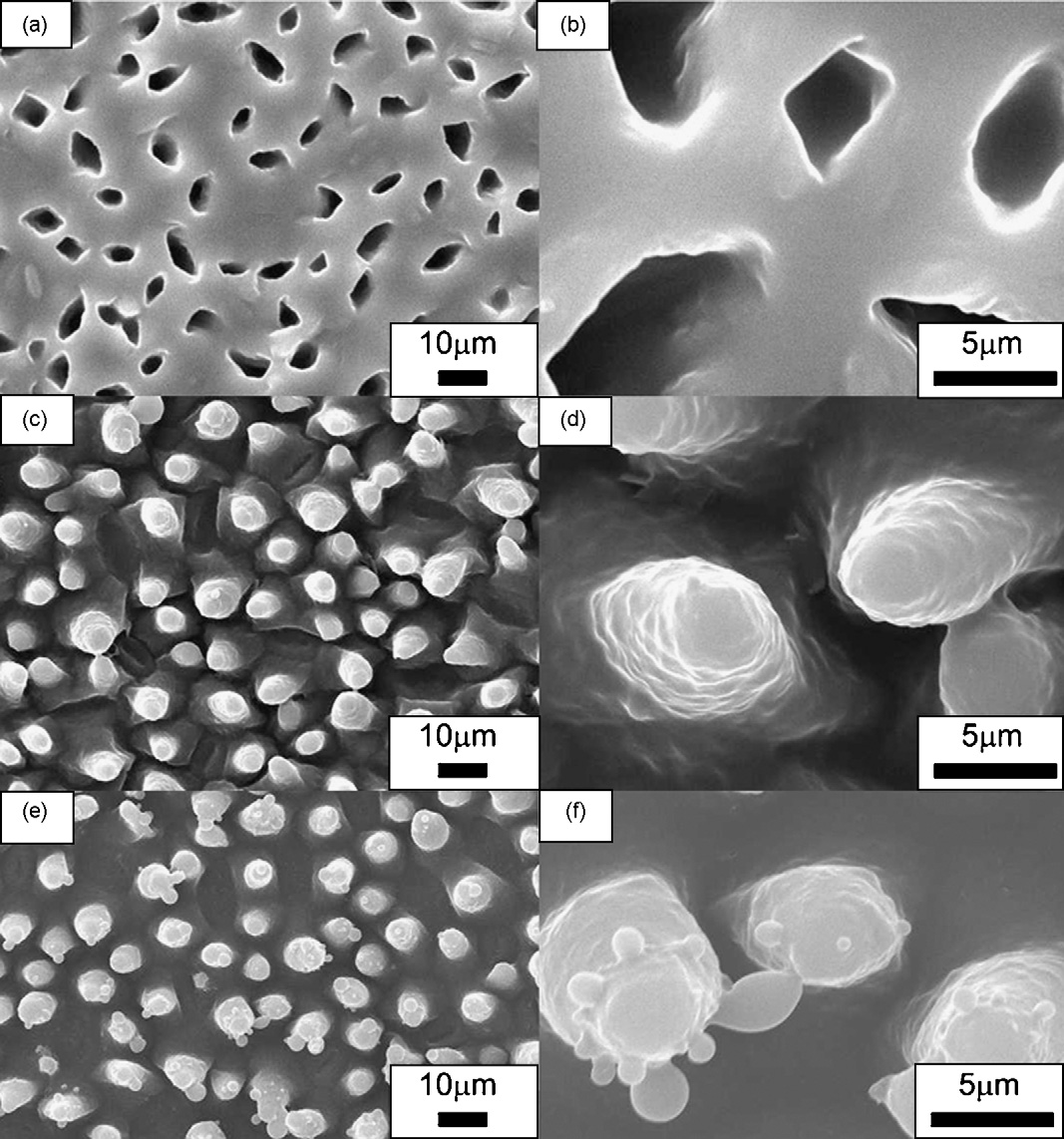Protein adsorption and cell adhesion on polyurethane/Pluronic® surface with lotus leaf-like topography
Colloids and Surfaces B: Biointerfaces,
2010,
77,
234-239.
文章链接:http://dx.doi.org/10.1016/j.colsurfb.2010.01.032
郑军博士在Colloids and Surfaces B: Biointerfaces发表研究论文
发布日期:2010-12-25
Lotus leaf-like polyurethane/Pluronic® F-127 surface was fabricated via replica molding using a natural lotus leaf as the template. Water contact angle measurements showed that both the hydrophobicity of the unmodified polyurethane (PU) surface and the hydrophilicity of the PU/Pluronic® surface were enhanced by the construction of lotus leaf-like topography. Protein adsorption on the PU/Pluronic® surface without topographic modification was significantly lower than on the PU surface. Adsorption was further reduced when lotus leaf-like topography was constructed on the PU/Pluronic® surface. Cell culture experiments with L929 cells showed that adhesion on the PU/Pluronic® surface with lotus leaf-like topography was low and adherent cells were spherical and of low viability. The PU/Pluronic® surface with lotus leaf-like topography thus appears to be resistant to nonspecific protein adsorption and to cell adhesion, and these effects derive from the both chemical composition and topography. The results suggest a new strategy
based on surface topography for the design of antifouling materials.

